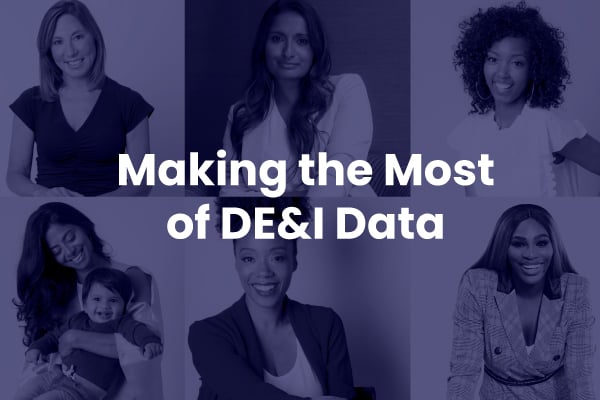If you’ve been reading our series on “Diverse Talent Cloud -- the Future of Work,” you know diversity is good for business. Not only is it critical to increasing company profitability, efficiency, and innovation, it’s also a key component for attracting and retaining future talent -- be it full-time, part-time, SOW, contractor, IC, or gig workers.
Once companies commit to getting their DE&I strategy right, especially as it relates to the contingent workforce, determining how to track and measure where they are today and where they want to go is critical to ensuring they can report on -- and adjust -- their goals over time.
Unfortunately, this isn’t as easy to track as with a company’s full-time employee base. This lack of viable and easily implementable solutions has put off some companies from tracking (or really paying attention to) the diversity in their extended workforce.
Why now?
The benefits surrounding diversity hiring, coupled with the acute nature of today’s socio-economic climate, highlight the need for real change when it comes to diversity and equity in all areas of life -- and one major component of this is in the workplace.
According to Gartner, the gig economy is growing three times faster than the overall U.S. workforce. It’s projected that by 2023, more than half (52%) of the U.S. workforce will be gig economy workers. If workers can’t see themselves in a company’s culture and brand, they may miss out on top talent who choose to go elsewhere because of it.
In fact, a recent Glassdoor study found two out of three candidates consider a company’s diversity hiring quotas before they consider accepting a position.
Finally, it’s front and center in today’s government. President Biden has a 26-page plan on how he will combat racial inequality during his administration and an equally robust Agenda for Women. Given the impact of the pandemic on women in the workforce, it’s critical every business puts diversity at the top of the priority list.
How can companies track DE&I data for their contingent workforce?
EEOC (Equal Employment Opportunity Commission) reporting allows companies to track and report their diversity hiring, providing a measure on whether they are effectively achieving their DE&I goals.
Partnering with organizations with forward-thinking talent strategies with diversity at its core that can help companies track this information for their contingent workforce is crucial.
At The Mom Project, our community is 90%+ gender diverse, 43%+ ethnically diverse, and we are committed to reaching 50%+ in 2022. While we are built by and for women, our business is founded upon equal opportunity. Once a candidate applies to an opportunity, gender, race, and age do not factor into the hiring recommendation.
One way we track EEOC information internally is by gathering this information when talent is hired. It is then secured and stored in a stand-alone database, blinded for PII confidentiality, and tracked by function and location. Post-hire, optional EEOC data is collected again – this time for program reporting. This data empowers our partners with critical true talent diversity metrics.
Our research and analytics division, Werklabs, provides an additional layer of metrics to analyze and check hiring decisions through a separate data collection effort. This allows for the opportunity to measure how actual hiring decisions compare to cloud demographics, as well as identifying actionable opportunities for success and improvement in hiring and retaining talent ongoing.
While EEOC data is voluntary, we also educate our network on the importance of the data in upholding equal opportunity employment laws, providing more diversity to the clients they work for, and becoming a part of the solution to bring about a more diverse workforce.
As a part of our commitment to this topic, this is the seventh in the series “Diverse Talent Cloud -- the Future of Work,” intended to help shed light on their importance, ways to integrate them into your existing talent strategies, implementation best practices, and how to best support these initiatives organizationally. We look forward to sharing more with you soon. In the meantime, please check out more information here.



.png)
